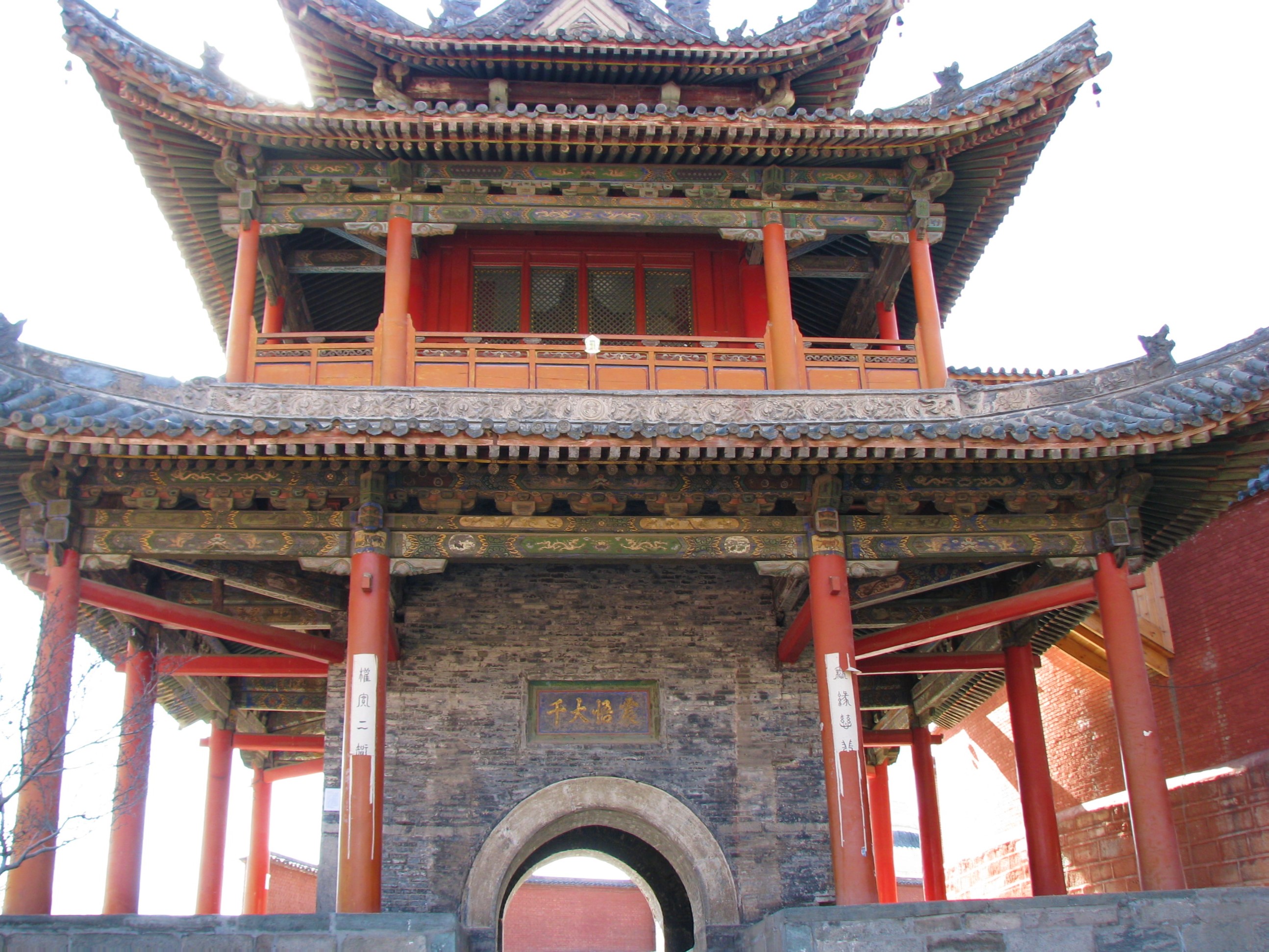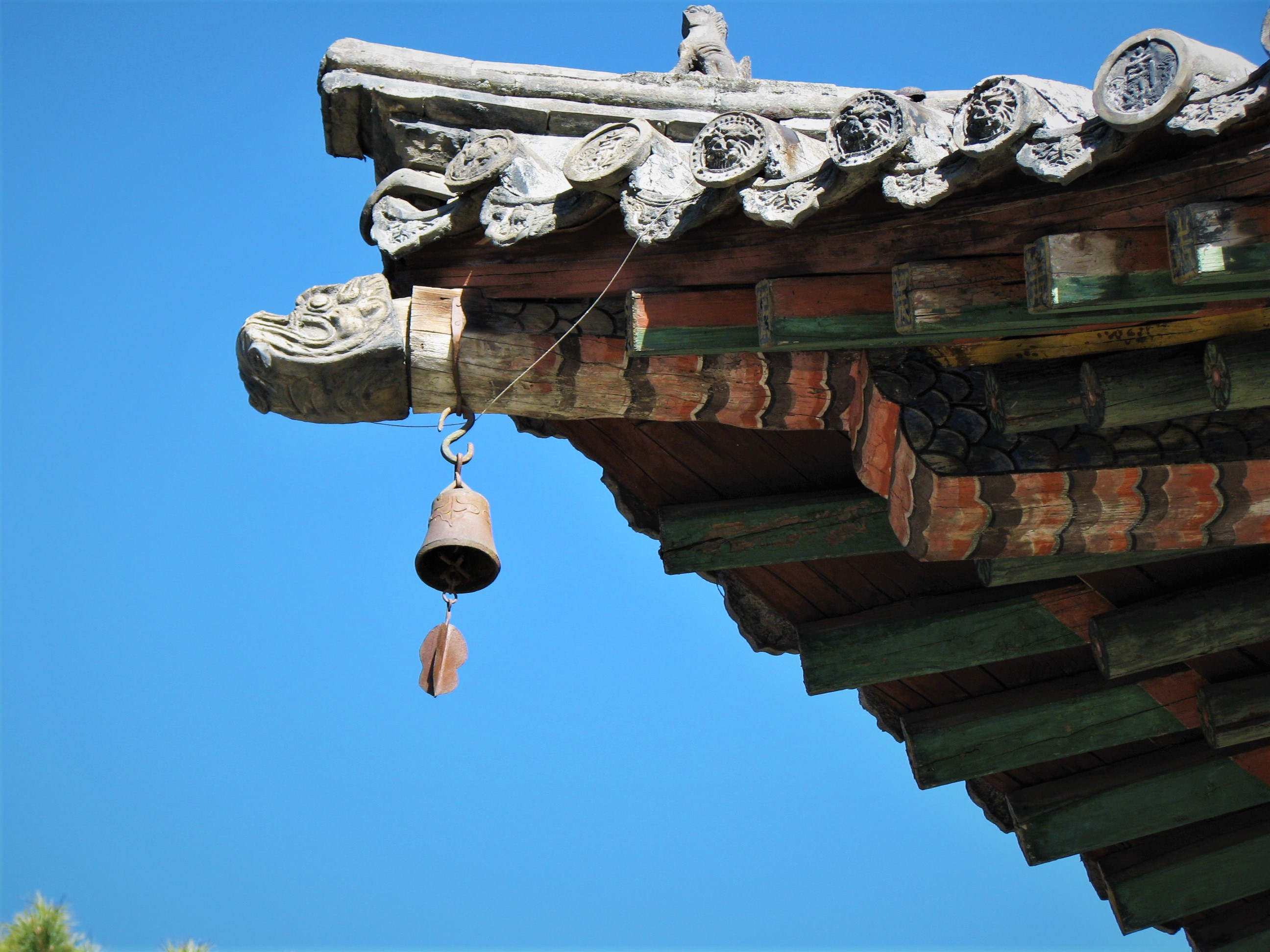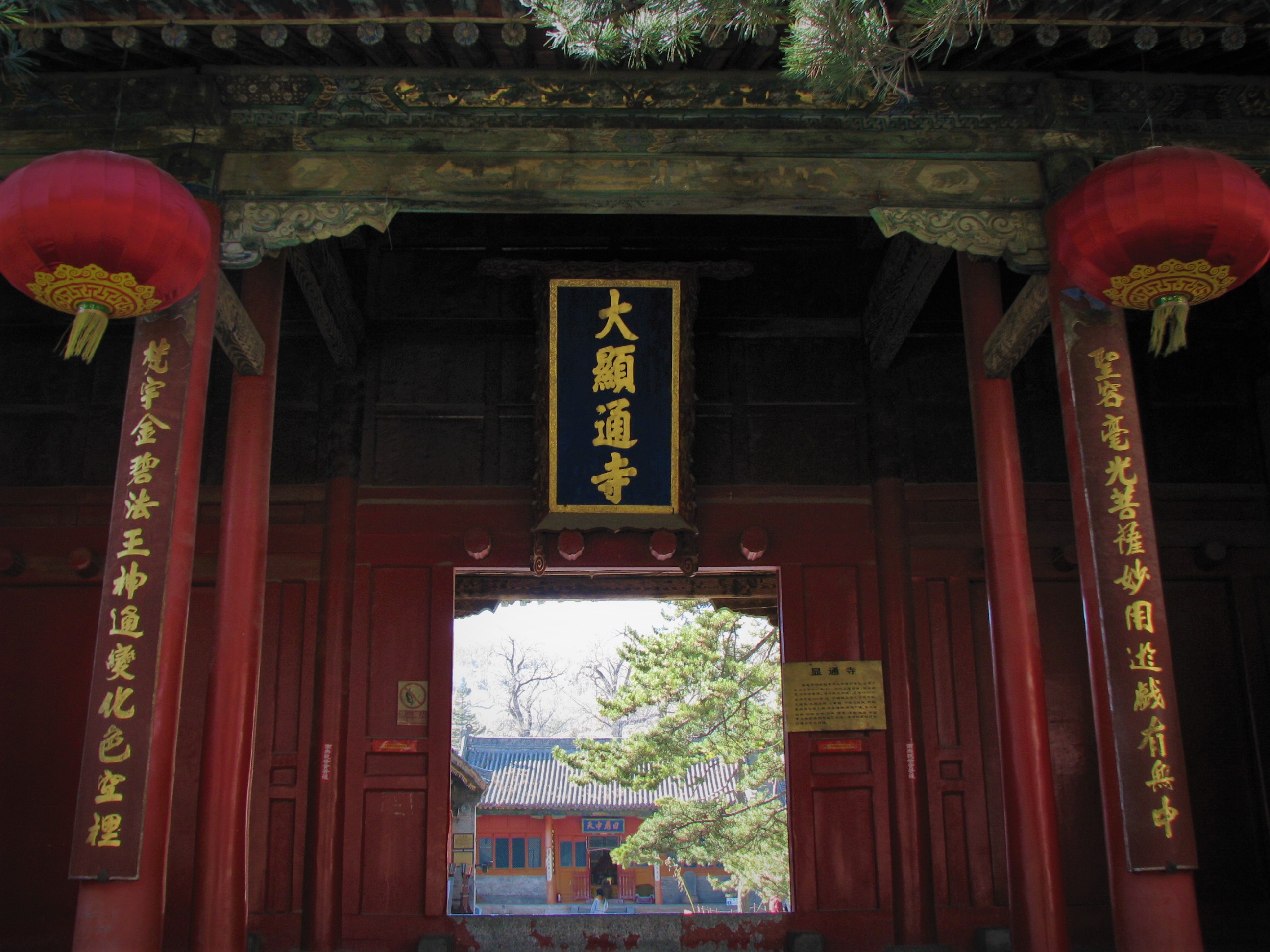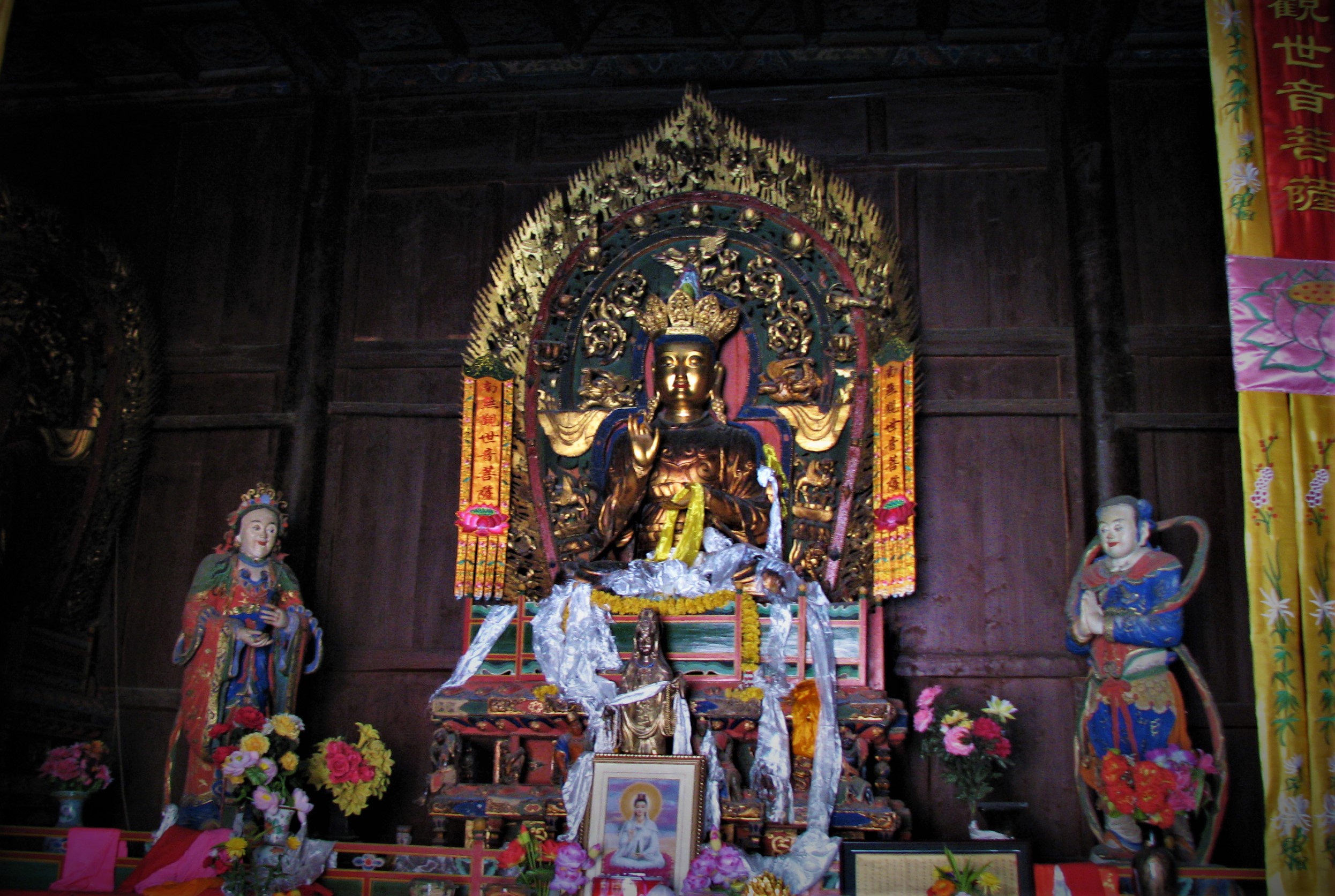
Mount Wutai 五台山 is located in the Shanxi province in northern China. Mount Wutai is actually not one single mountain but an extensive mountain range that features five peaks. Covering a massive 2837 square kilometres, the highest peak of Mount Wutai rises up to 3058 metres – the highest point in central northern China.
Its name “Wutai Shan 五台山” recalls its five peaks – literally meaning “Five Stations Mountain“. But its original, more ancient name – “Qingliang Shan 清凉山” refers to its general low temperature even though it is on the same latitude as Beijing. The average summer temperature is only 9.5 degree Celsius, while in winter it goes down to -30 degree Celsius.
The History of Mount Wutai
Before Buddhism arrived in China, the only religion of the country was Taoism, much like how Shintoism is the native religion of Japan.
According to legend, Mount Wutai was called “Zifu Shan 紫府山” thousands of years ago. “Zifu 紫府” meant “House of Zi”, referring to the realm of the Deity Ziwei “紫微大帝”. “Ziwei 紫微” is also the constellation of the north star, so the highest peak in this northern part of China was the place where the north star resided.
So how did Mount Wutai turn from a holy Taoist site to a Buddhist one?
How Mount Wutai turned Buddhist
No one knew exactly when Buddhism arrived in China. The earliest record was in the year 2 BC, when an envoy of the Kingdom of the Greater Yuezhi 大月氏 (located in current Xinjiang) recited a Buddhist sutra to a Chinese scholar called Lu Jing 卢景 in the capital city of Chang’an (current day Xi’an).
Sixty-nine years later in 67 AD, two Buddhist monks from India called Kāśyapa Mātaṇga 迦葉摩騰 and Dharmaratna 竺法兰 arrived in the city of Luoyang 洛阳 not far from Mount Wutai to preach this new religion. Apparently, their sermons highly impressed the then Emperor Han Mingdi 汉明帝刘庄.
In 69 AD, the two monks decided to set up shop on the sacred Taoist site of Mount Wutai. But faced with the “oppressive majority” of Taoist priests in the mountains (talk about being ungrateful immigrants who refuse to integrate), the Buddhist duo complained to their latest convert Emperor Han Mingdi.
So to test which the false religion is, Emperor Han Mingdi ordered Buddhist and Taoist scriptures be burnt in Luoyang. All Taoists books were reduced to ashes while by some fraudulent means “miraculously“, the Buddhist sutras remained stubbornly intact. The site of this Buddhist-Taoist face-off is still marked on the spot of the “Fenjing Tai” 焚经台 (“scripture-burning station”) in today’s Luoyang city.
So, the “fake religion” of Taoism was driven out of their Mount Wutai stronghold, leaving the fraudster monks Kāśyapa Mātaṇga and Dharmaratna free rein to do whatever they wanted. Soon after, they “miraculously” (again) discovered a stupa built by King Asoka (Buddhist king who lived from 268 to 232BC in today’s Afghanistan, 4075km away) containing a holy Śarīra (diamond-like crystals formed in the ashes of holy Buddhist men during their cremation) of Buddha himself. Also, a giant footprint of Buddha was “discovered” next to it. On top of that, it was found that the Boddhisatva Mañjuśrī (文殊師利菩薩) experienced his “bodhimaṇḍa” (some sort of Buddhist mental holiday destination) not anywhere else but on Mount Wutai in China (!!). All this “proved” Mount Wutai was “originally” a Buddhist sacred site after all.
Kāśyapa Mātaṇga and Dharmaratna also told the Emperor and all their new Chinese fans that Mount Wutai highly resembled the Vulture Peak (Gádhrakúta) in India where Buddha spent his summer holidays experienced his bodhimaṇḍa. Gádhrakúta is translated into Chinese as “Lingjiu Shan 灵鹫山”. So they named the new mega temple complex that everyone has built for them: “Lingjiu Temple”. Today’s “Xiantong Temple 显通寺” was built on the original Lingjiu temple and it is one of two earliest Buddhist temples in China dating back nearly two thousand years.
What’s there to see on Mount Wutai
The Five Peaks
Mount Wutai is one of the top ten mountain sites of China. The view is simply breathtaking. As mentioned above, Mount Wutai has five peaks. They are:
– Eastern Peak: Wanghai Feng 望海峰
– Southern Peak: Jinxiu Feng 锦绣峰
– Central Peak: Biyan Feng 翠岩峰
– Western Peak: Guanyue Feng 挂月峰
– Northern Peak: Yedou Feng 叶斗峰 is also the highest peak at 3061 metres above sea level
You should visit any of the five peaks to experience the peace and visual wonder that link this place to the two religions for the past few millennia.
Visit any of the 95 Buddhist temples
Since the time of the two Indian charlatans monks, Buddhism has grown and taken root on Mount Wutai. A total of 95 complete Buddhist temples litter around this sacred mountain range. This is also the only place in China where the Chinese and Tibetan branches of Buddhism mix and sometimes merge.
Architecturally, this is indeed a Buddhist melting pot. Here, Chinese, Mongolian, Manchurian and Tibetan Buddhism designs shamelessly intermarry into a messy orgy of jarring oddities. This is like an ancient religious version of those giant neon-light billboards of the worst possible colour combinations in Shanghai or Guangzhou’s nighttime cityscape.
If you are in a rush, at least visit the odd Xiantong Temple 显通寺. You can at least experience the two-thousand year old history of Chinese Buddhism in one single location.
Eat some Sea Buckthorns
You will notice that sea buckthorn berries 沙棘 grow literally everywhere on Mount Wutai.
Perhaps these are the true reason how this site was so holy in the first place.
Called Shaji 沙棘 in Chinese, the sea buckthorn berries are now known to be nature’s vitamin nuclear bomb. It contains the highest amount of Vitamin C in any fruit, also Vitamins E, B1, B2, B12, K and P, and plus fats, protein and sugar!
Genghis Khan was rumoured to take these regularly as a supplement and Soviet scientists claimed the berries successfully reduced radiation exposure in astronauts. Anecdotal accounts claim sea buckthorn berries also kill cancer cells.
How to get to Mount Wutai
You can only drive up to Mount Wutai as there is no public transport due to the remoteness and altitude of the site.
Tour agencies offer trips in coaches but if you want to truly enjoy the site, hire an experienced driver through your agency in Beijing.





















